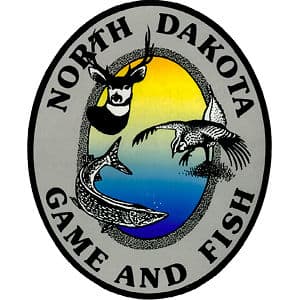North Dakota Game and Fish Department Offers Ice Awareness Tips for Hunters, Anglers

State Game and Fish Department officials are cautioning hunters to be wary of where they hunt, as late-season weather is freezing North Dakota’s small and mid-sized waters, giving the appearance of safe foot travel.
Nancy Boldt, department boat and water safety coordinator, said hunters should be cautious of walking on frozen stock ponds, sloughs, creeks and rivers.
Ice thickness is not consistent, Boldt said, as it can vary significantly within a few inches. Hunters walking the edge of a cattail slough will not find the same ice thickness in the middle. “The edges firm up faster than the center,” she added. “So, with your first step the ice might seem like it is strong enough, but it may not be anywhere near solid enough once you progress away from the shoreline.”
And in the case of snowfall, Boldt cautions hunters to be aware of snow-covered ice. Snow insulates ice, inhibiting solid ice formation, and makes it difficult to check thickness. Snow also hides cracked, weak and open water areas.
Winter anglers are also encouraged to consider early ice conditions before traveling onto and across North Dakota lakes.
Keep in mind:
Avoid cracks, pressure ridges, slushy or darker areas that signal thinner ice. The same goes for ice that forms around partially submerged trees, brush, embankments or other structures.
Ice thickness is not consistent and can vary significantly even in a small area. Ice shouldn’t be judged by appearance alone. Anglers should drill test holes as they make their way out on the lake, and an ice chisel should be used to check ice thickness while moving around.
Daily temperature changes cause ice to expand and contract, affecting its strength.
The following minimums are recommended for travel on clear-blue lake ice formed under ideal conditions. However, early in the winter it’s a good idea to double these figures to be safe: 4 inches for a group walking single file; 6 inches for a snowmobile or all-terrain vehicle; 8-12 inches for an automobile; and 12-15 inches for a pickup/truck.
These tips could help save a life:
Wear a personal flotation device and carry a cell phone.
Carry ice picks or a set of screwdrivers to pull yourself back on the ice if you fall through.
If someone breaks through the ice, call 911 immediately. Rescue attempts should employ a long pole, board, rope, blanket or snowmobile suit. If that’s not possible, throw the victim a life jacket, empty water jug or other buoyant object. Go to the victim as a last resort, but do this by forming a human chain where rescuers lie on the ice with each person holding the feet of the person in front.
To treat hypothermia, replace wet clothing with dry clothing and immediately transport victim to a hospital.

